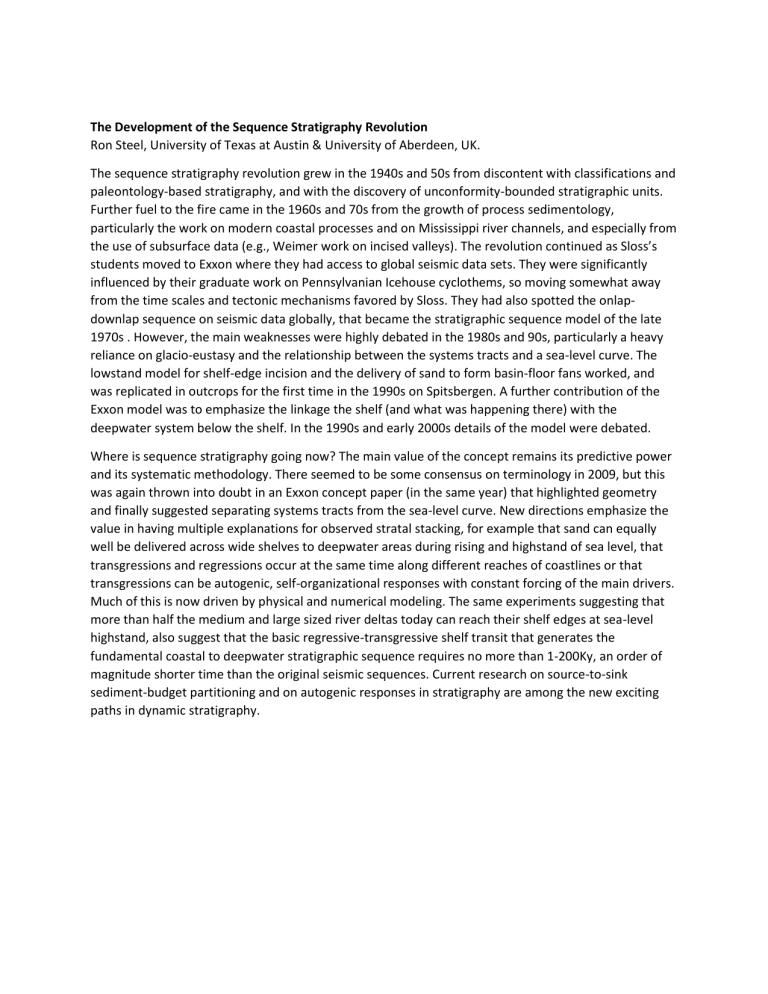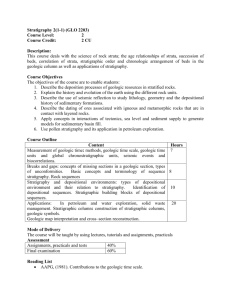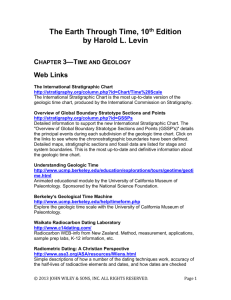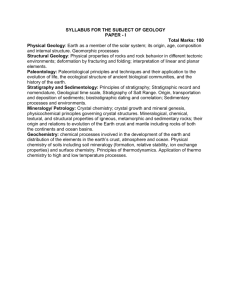Document 7033697

The Development of the Sequence Stratigraphy Revolution
Ron Steel, University of Texas at Austin & University of Aberdeen, UK.
The sequence stratigraphy revolution grew in the 1940s and 50s from discontent with classifications and paleontology-based stratigraphy, and with the discovery of unconformity-bounded stratigraphic units.
Further fuel to the fire came in the 1960s and 70s from the growth of process sedimentology, particularly the work on modern coastal processes and on Mississippi river channels, and especially from the use of subsurface data (e.g., Weimer work on incised valleys). The revolution continued as Sloss’s students moved to Exxon where they had access to global seismic data sets. They were significantly influenced by their graduate work on Pennsylvanian Icehouse cyclothems, so moving somewhat away from the time scales and tectonic mechanisms favored by Sloss. They had also spotted the onlapdownlap sequence on seismic data globally, that became the stratigraphic sequence model of the late
1970s . However, the main weaknesses were highly debated in the 1980s and 90s, particularly a heavy reliance on glacio-eustasy and the relationship between the systems tracts and a sea-level curve. The lowstand model for shelf-edge incision and the delivery of sand to form basin-floor fans worked, and was replicated in outcrops for the first time in the 1990s on Spitsbergen. A further contribution of the
Exxon model was to emphasize the linkage the shelf (and what was happening there) with the deepwater system below the shelf. In the 1990s and early 2000s details of the model were debated.
Where is sequence stratigraphy going now? The main value of the concept remains its predictive power and its systematic methodology. There seemed to be some consensus on terminology in 2009, but this was again thrown into doubt in an Exxon concept paper (in the same year) that highlighted geometry and finally suggested separating systems tracts from the sea-level curve. New directions emphasize the value in having multiple explanations for observed stratal stacking, for example that sand can equally well be delivered across wide shelves to deepwater areas during rising and highstand of sea level, that transgressions and regressions occur at the same time along different reaches of coastlines or that transgressions can be autogenic, self-organizational responses with constant forcing of the main drivers.
Much of this is now driven by physical and numerical modeling. The same experiments suggesting that more than half the medium and large sized river deltas today can reach their shelf edges at sea-level highstand, also suggest that the basic regressive-transgressive shelf transit that generates the fundamental coastal to deepwater stratigraphic sequence requires no more than 1-200Ky, an order of magnitude shorter time than the original seismic sequences. Current research on source-to-sink sediment-budget partitioning and on autogenic responses in stratigraphy are among the new exciting paths in dynamic stratigraphy.











